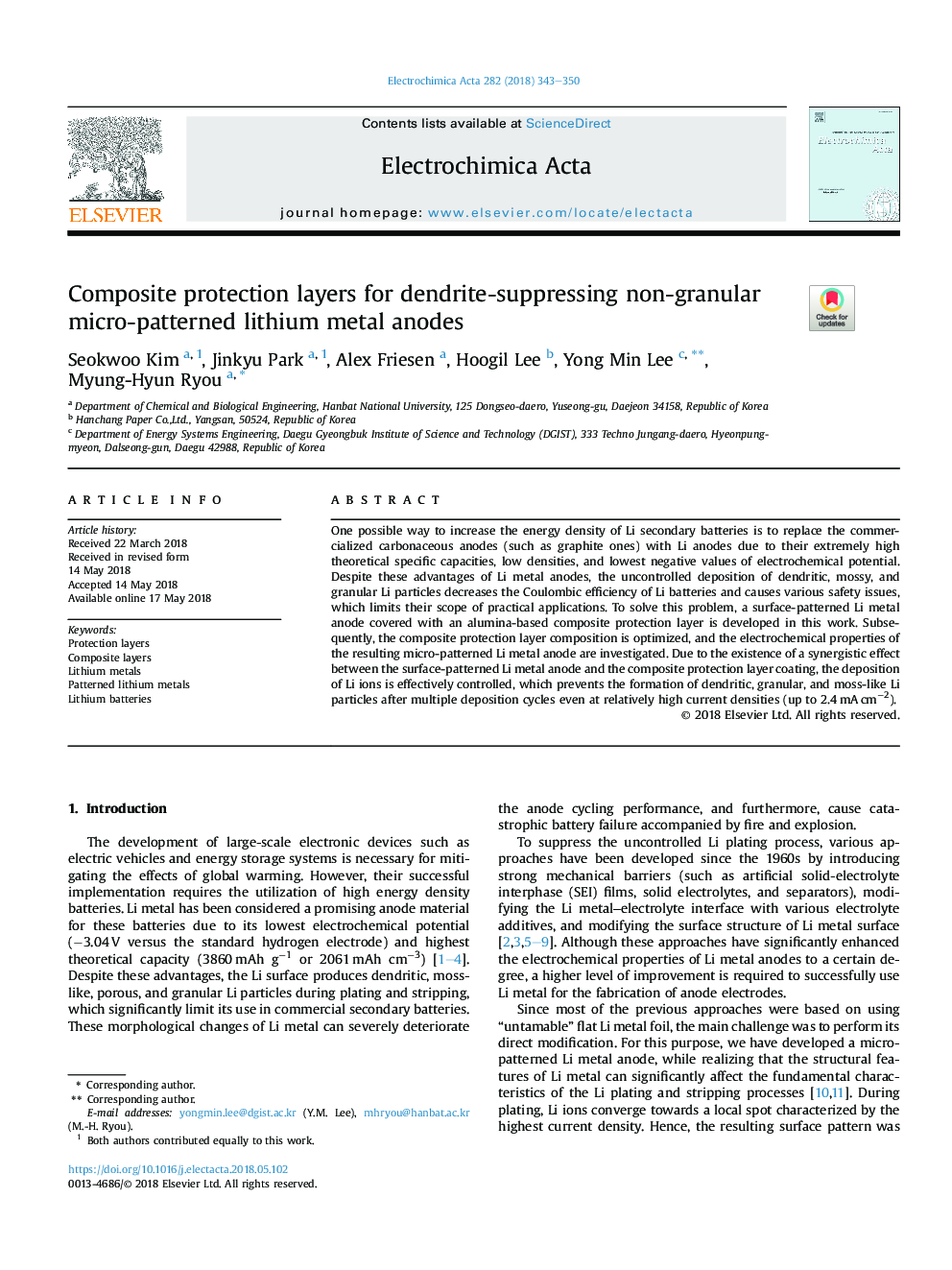| Article ID | Journal | Published Year | Pages | File Type |
|---|---|---|---|---|
| 6602183 | Electrochimica Acta | 2018 | 8 Pages |
Abstract
One possible way to increase the energy density of Li secondary batteries is to replace the commercialized carbonaceous anodes (such as graphite ones) with Li anodes due to their extremely high theoretical specific capacities, low densities, and lowest negative values of electrochemical potential. Despite these advantages of Li metal anodes, the uncontrolled deposition of dendritic, mossy, and granular Li particles decreases the Coulombic efficiency of Li batteries and causes various safety issues, which limits their scope of practical applications. To solve this problem, a surface-patterned Li metal anode covered with an alumina-based composite protection layer is developed in this work. Subsequently, the composite protection layer composition is optimized, and the electrochemical properties of the resulting micro-patterned Li metal anode are investigated. Due to the existence of a synergistic effect between the surface-patterned Li metal anode and the composite protection layer coating, the deposition of Li ions is effectively controlled, which prevents the formation of dendritic, granular, and moss-like Li particles after multiple deposition cycles even at relatively high current densities (up to 2.4â¯mAâ¯cmâ2).
Keywords
Related Topics
Physical Sciences and Engineering
Chemical Engineering
Chemical Engineering (General)
Authors
Seokwoo Kim, Jinkyu Park, Alex Friesen, Hoogil Lee, Yong Min Lee, Myung-Hyun Ryou,
